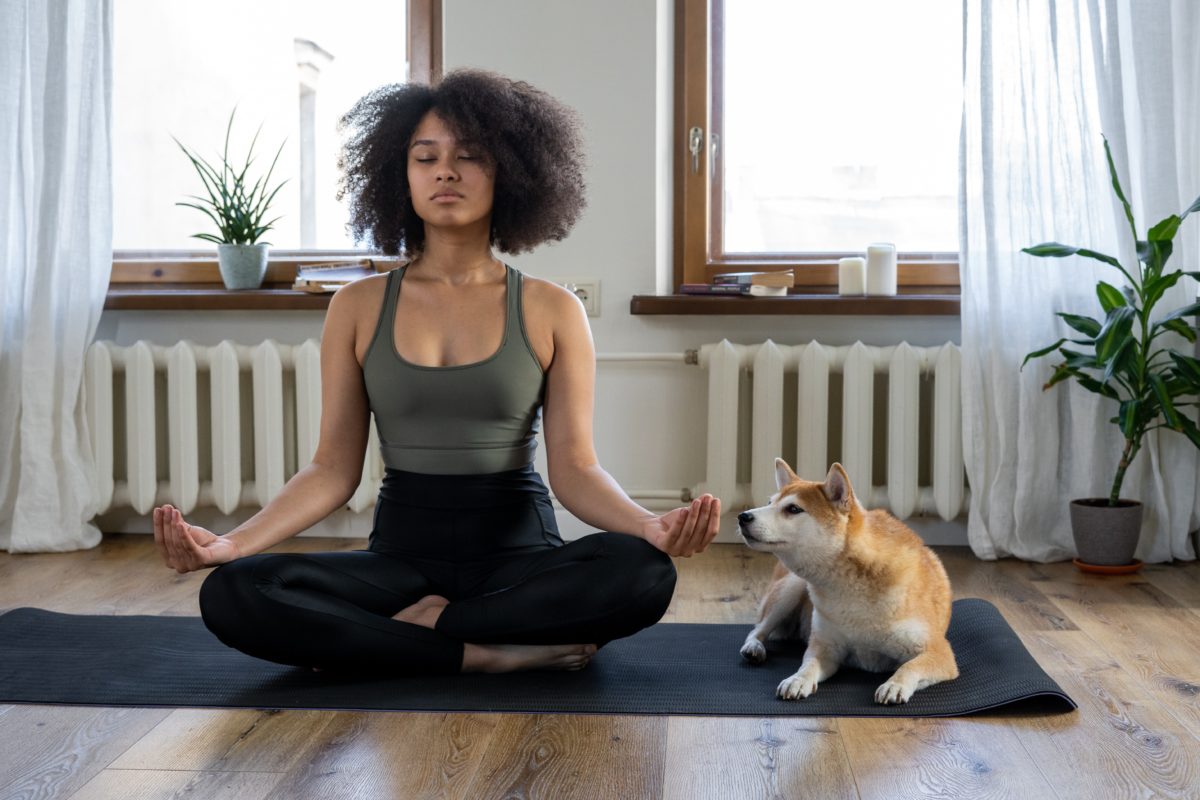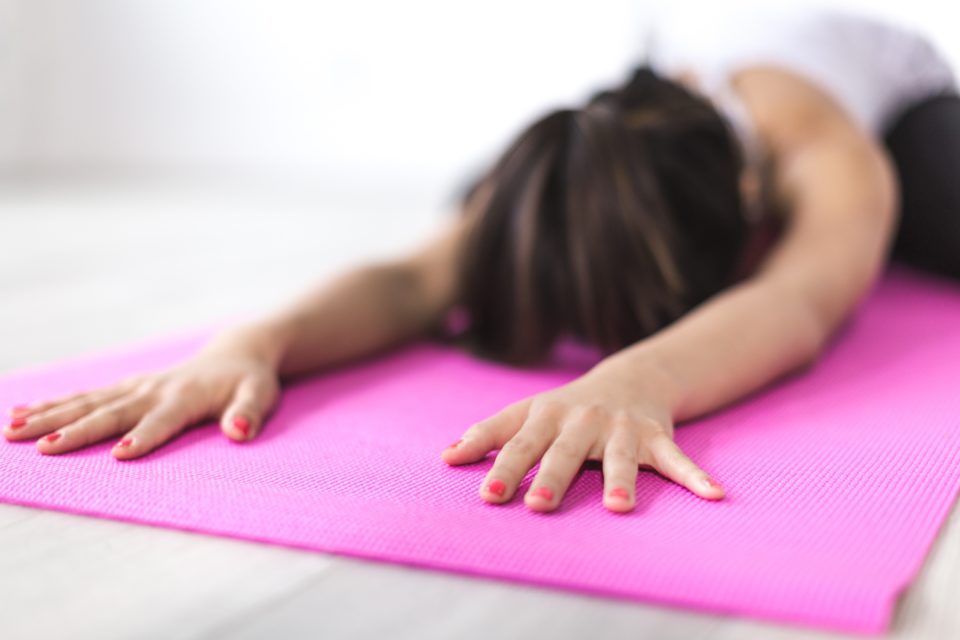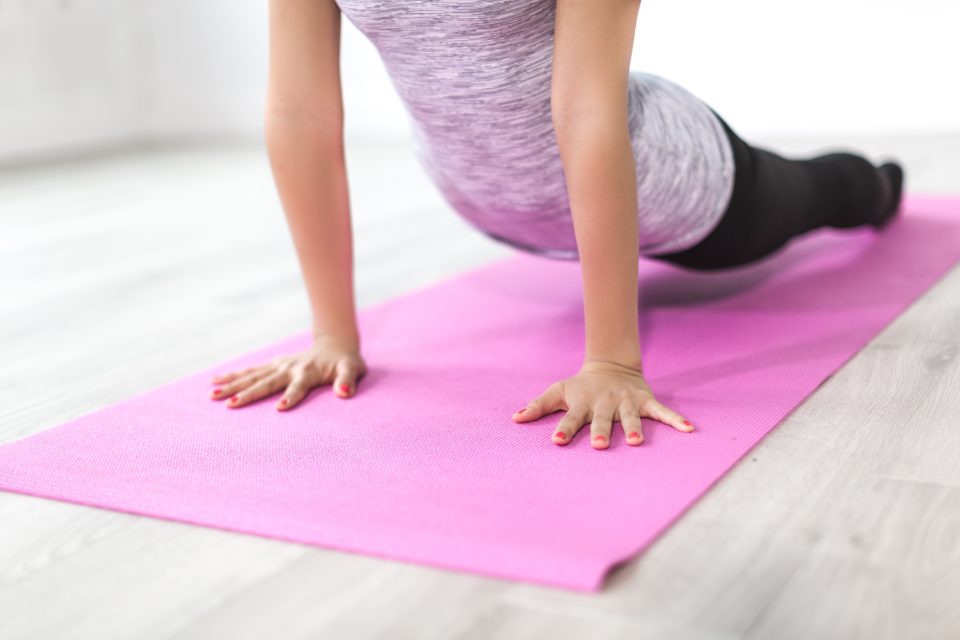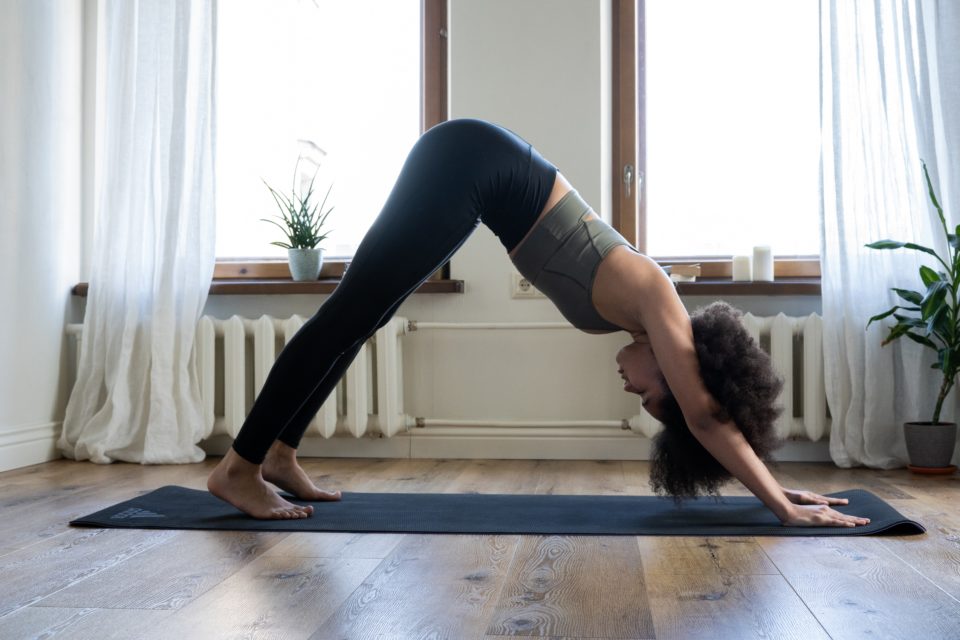
This second, November, lockdown is exactly the sort of time when we could really do with a little inspiration to establish new routines. So how about doing some yoga at home? First thing in the morning, in your home office perhaps, or in the evening before you go to bed. Apart from being a great way to relax, yoga can also provide the exercise you need and improve your flexibility. We take a look at a few key yoga terms, as well as exploring why yoga is so effective and what you need to get started with your home yoga routine.
The basics of yoga
Let’s start with some yoga terminology. After all, whether you want to do your own home yoga routine or book onto an online class that you can do from home, it’s worth knowing the most common terms. To make it easier to understand, we generally distinguish between terms used to describe the exercises and terms that are used alongside the exercises.
First let’s look at the terms that, alongside the exercises, are also an integral part of yoga:
Namaste
“Namaste” is a Sanskrit word that translates simply as “bow” and is the greeting used at the beginning of each yoga session. It is a greeting that shows a deep respect and should therefore always be used.
Om
“Om” is a sound that is chanted during yoga sessions. It signifies “the presence of the Absolute” and is also depicted as a symbol. Chanting the word “Om” is generally said to bring inner peace and calm the mind.
Shanti
“Shanti” comes from the Sanskrit and translates literally as “peace, tranquility of the mind”. This invocation of peace is usually chanted several times before or after a yoga class. The beautiful thing about it is that the first wish for peace is for yourself, the second is for your fellow human beings, and the third is for the whole world. That’s something we could all really use right now. ? When the Shanti is combined with the “Om” sound, it becomes a mantra.
Mantra
A mantra is therefore a sequence of words taken from sacred texts (such as Om Shanti Shanti Shanti) written in Sanskrit. Repeating a mantra is said to have an uplifting, beneficial effect on the consciousness and can be helpful for those with mental health problems, for example.
Now that we know a bit more about the terms that are used alongside the actual yoga exercises, let’s take a look at the terms that relate to the yoga poses themselves.
Asanas
In Sanskrit, “asanas” means sitting and posture and is the collective term for all yoga poses. Three of the most well-known exercises are Surya Namaskar, or the sun salutation, Bhujangasana, or cobra pose, and Shavasana.
Shavasana
The Sanskrit word “Shavasana” literally means corpse. But don’t worry, this pose merely takes its name from the fact that you are meant to lie on your back as motionless as possible. It is one of the most important relaxation poses in yoga and the aim is to let your thoughts flow freely. Ideally, you should try not to let anything distract you and instead just allow yourself to sink into a state of deep, meditative relaxation.
Why is yoga so good for you?
Yoga isn’t just about exercise and movement. Yoga helps combat stress in the body, mind and soul in a variety of ways. Regular yoga sessions are also good for your flexibility, will make you stronger, can improve your coordination, and protect against cardiovascular disease and back problems.
But that’s not all! By practicing controlled breathing while doing the asanas, it is even possible to release stubborn blockages and have a positive effect on the nervous system and metabolism.
Another benefit of yoga is its ability to develop your mindfulness. Coordinating movement with deep breathing teaches you to be more self-aware. This can bring about lasting changes in our behavior patterns, including in other areas of our lives, as we become more aware of them. Regular yoga not only improves posture but also improves your appearance.
To sum up, here are 8 reasons to start your new yoga routine now:
- To stay fit – both physically and mentally
- To train your body to cope with stress
- To improve your coordination, strength and flexibility
- To improve your breathing and mindfulness
- To actively reduce stress
- To improve your posture
- To stretch your connective tissue and fascia
- To optimize your posture and appearance
How to start your home yoga routine
So you’re ready to start your home yoga routine? We recommend taking an active but gradual approach.
What do you need?
- Somewhere you feel at ease, with plenty of space
- A comfortable yoga mat
- Some yoga music or relaxation music (optional)
- Comfortable clothing
- Water
A calm, quiet place that is not too hot or too cold is ideal. Why not set up your study with this in mind or create a spot in the living room.
A mat, blanket and yoga cushion are always good to have with you.
But you don’t necessarily need a special room or cushions for your yoga session. Just make sure you have enough space and that you feel relaxed in the room. The mat should provide you with extra support, but of course you can also start off on a carpet.
Quick tip: You can also get special yoga clothes, of course, which are ideal for doing yoga. Tight clothes like leggings and close-fitting tops are especially suitable, because very loose clothes can slip out of place in some yoga poses. Obviously you can just wear whatever you feel most comfortable in, though.
How to do your first yoga exercises
It’s up to you how you start. You can either find a good YouTube video to watch or just start with your favorite relaxing music. Of course, it goes without saying that a professional online course is also a great way to get your home yoga routine started.
Before you dive into the exercises, you definitely need to warm up a bit. You can either do this by holding a plank, or by doing a sitting stretch.
And off we go
When you feel ready, just concentrate on your breathing and start off with a few basic poses. Child’s pose, cobra, or the slightly more advanced downward dog are all great asanas to start with.
Child’s pose

How do you do child’s pose?
- Start off kneeling in diamond pose, sitting back on your heels
- Lower your upper body until it is resting almost between your thighs
- Bring your forehead to rest on the mat
- Lay your arms alongside your body
- Let your shoulders relax downward and rest your butt down deeper toward your feet
- Hold this pose for several breaths
Cobra

How do you do cobra?
- Lie on your front in prone position
- Keeping your legs together, lightly press down into the floor through the tops of your feet
- Your hands should be beneath your shoulders, with your fingertips facing forward so they line up with your shoulders
- Slowly lift your upper body off the floor and push your chest up and forward
- Draw your shoulder blades together and down so your chest opens up
- Your arms will help you maintain an upright position and should be close to your body
Downward dog

How do you do downward dog?
- Start off in a push-up and press your hands firmly into the floor with your fingers spread apart
- Push your butt upward by actively pushing your heels back and down toward the floor
- Keep your shoulders relaxed, so that they are as far away from your ears as possible
- Keep your eyes focused between your feet
- If the stretch in the backs of your legs feels too intense, bend your knees
- Stay in this pose for a few breaths and consciously focus on your breathing